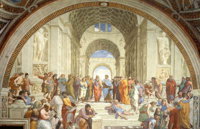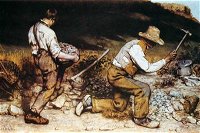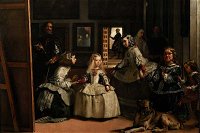
Art For Art's Sake Trivia Quiz
Match the Art Movements
Here we find five renowned art movements that span different centuries. Match the famous paintings to one of these five movements: Renaissance, Baroque, Impressionism, Realism, and Cubism. (Some images have been cropped for detail.)
by trident.
Estimated time: 3 mins.














